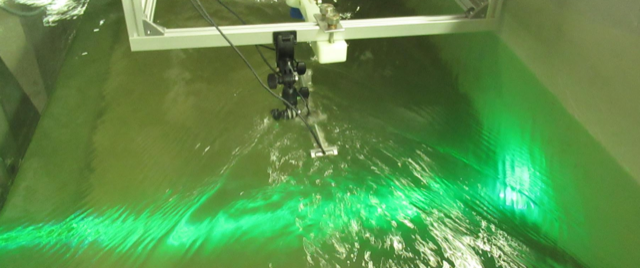A laboratory investigation of bedload monitoring with the UB-Lab 2C and the UB-Lab X8
Slaven Conevski, R. Aleixo, Massimo Guerrero and Nils Rüther co-wrote a journal paper entitled Bedload Velocity and Backscattering Strength from Mobile Sediment Bed: A Laboratory Investigation Comparing Bistatic Versus Monostatic Acoustic Configuration, published on November 2020 in Water,12(3318):1-25, as part of the Special Issue Measurements and Instrumentation in Hydraulic Engineering and it is available in pdf online.
As part of the SediPass project, this investigation compared monostatic measurement instruments:
- two different ADCPs (Acoustic Doppler Current Profiler)
- a UVP from Ubertone, the UB-Lab X8
with a bistatic measurement instrument:
- an ADVP from Ubertone, the UB-Lab 2C
The authors conclude that the "apparent bedload velocity measured by the bistatic sonar (ADVP) corresponded to the most realistic representation of the true bedload velocity, delivering the full-profile time-averaged velocity of the active layer. This clearly showed that the acoustic geometry plays a crucial role in acoustic sampling, which determines both the backscattering strength from the flume bottom (i.e., EI) and the corresponding apparent bedload velocity (va). In general, the bistatic configuration has shown the following advantages:
- A finer cell resolution and the possibility of profiling the bedload velocities.
- The possibility of detecting the thickness of the active bedload layer.
- Easier characterization of the backscattering sources, e.g., the influence of the immobile surface irregularity, isolating the surface from volume scattering.
The ADVP helped to explain some of the assumptions and limitations of the monostatic systems and define the main sources of error in the apparent bedload velocity estimation."

Back to the news list.